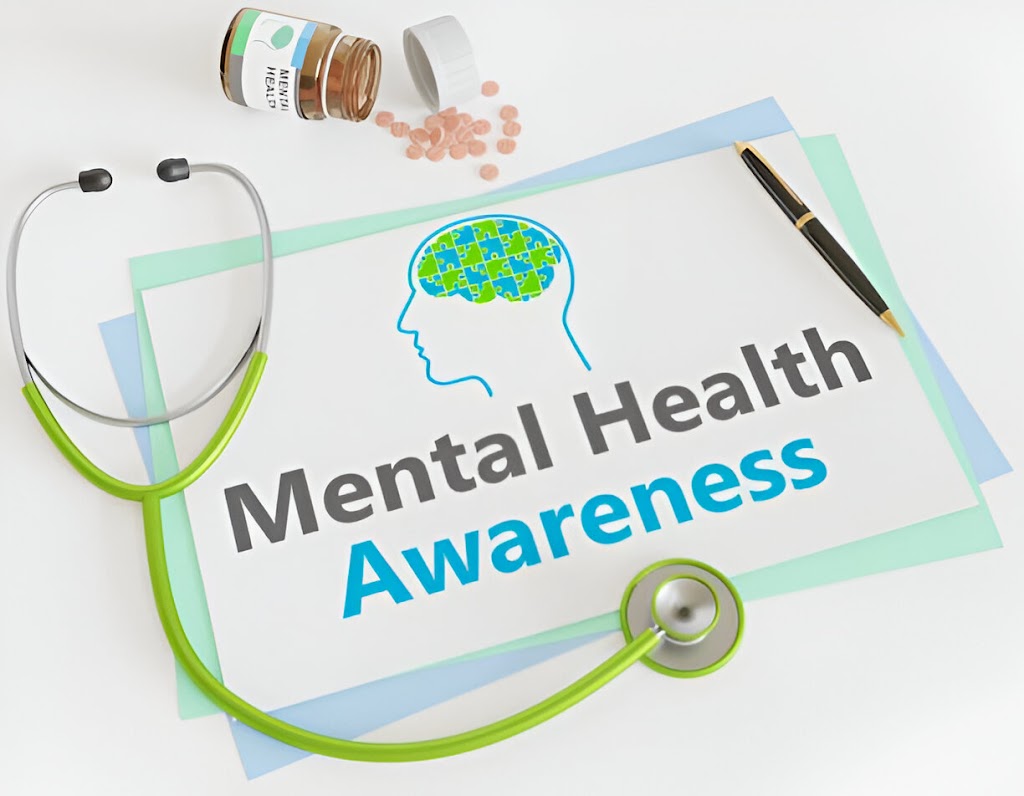Introduction
Bipolar disorder’s a complex mental health issue hitting millions worldwide. Grasping its various types matters – helps get diagnoses right, treatments working. We’ll look at Bipolar I, then Bipolar II, also Cyclothymia – noting key differences, how each shakes up day-to-day living.
Bipolar disorder, sometimes called manic-depressive illness, involves extreme mood swings – one minute high energy like mania, then crashing into deep sadness. These ups and downs mess with daily life, making it tough to stay steady at work or keep connections strong. When flares hit hard and outta nowhere, spotting symptoms fast makes a real difference. Getting help on time helps manage the chaos before things spiral.
Knowing the three main types of bipolar disorder can help people make sense of what they’re going through. Instead of just one big picture, it’s clearer when broken down into parts. First up is Bipolar I – this means having full-blown manic phases that go on for a week or more, sometimes ending in hospital visits. Then there’s Bipolar II, where low moods come back again and again, mixed with upbeat periods that aren’t quite mania but still shake things up. Unlike intense highs, these surges don’t take over completely, yet impact life pretty heavily. Another kind, called Cyclothymic Disorder, shows milder swings that drag on for years without breaking. While not as extreme, the constant shift between slight highs and lows wears anyone down over time.
In what’s coming up, you’ll see how bipolar disorder ties in with anxiety, mood lows, or intense emotional shifts – one affecting the other more than we think. Looking at these links helps people notice signs early while building kinder spaces for those dealing with it day by day.
What is Bipolar Disorder?
Bipolar disorder comes up a lot – but people rarely get it right. Basically, it’s not just one condition but several, tied together by wild swings in emotion way more extreme than normal ups and downs. One moment someone might feel super charged or easily annoyed; later they could crash into deep gloom or shut down completely. The flip from one side to the other sticks around for days or weeks, sometimes messing up work, sleep, even basic habits.
When someone’s in a high phase, they might feel super charged, overly sure of themselves, or act without thinking. On the flip side, low periods hit with total fatigue, a sense you can’t win, and less joy from things you usually like. These shifts aren’t quick or small – instead, they build up into a tangled mix of feelings that turn daily life upside down.
The effects of bipolar disorder reach nearly every part of daily living. Staying close to people, holding down work, or handling duties might feel almost impossible at times. Because moods shift unpredictably, organizing even small tasks gets tough – on top of that, loneliness or stress often grows stronger.
Folks who spot these warning signals right away usually act faster. Because family members, caregivers, or doctors team up once things show up – helping keep daily life steady while handling challenges down the road.
After this, let’s look at the main types of bipolar disorder – Bipolar I, Bipolar II, and Cyclothymic Disorder – one comes with unique signs and check rules. Spotting these differences means people can get proper help they actually need.
Types of Bipolar Disorder
Bipolar disorder comes in different forms, each having unique behaviors and hurdles. Knowing the differences between Bipolar I, Bipodal II, or Cyclothymia lets therapists adjust care while helping people grasp their situation better.
Bipolar I means intense manic phases – sometimes serious enough to land someone in the hospital.
Bipolar II Disorder involves mood swings – sometimes you feel a bit high or overly energetic, while at other times you crash into deep sadness; no extreme mania shows up though.
Cyclothymic Disorder means moods swing back and forth over time – but these shifts don’t get extreme enough to count as full mania or serious depressive episodes.
Spotting these variations helps people get care suited to their unique signs. Knowing this sets the base for better daily living while supporting steady mood health over time.
Bipolar I Disorder
Bipolar I Disorder means someone’s had at least one full manic phase. Those phases hit hard – can roll on for seven days straight or get so wild they need urgent help. When it kicks in, people might feel super high, wired, or easily annoyed. Actions can turn sudden, dangerous, or just plain unlike them.
Depressive times may show up too – feelings of emptiness, sluggishness, no motivation, along with shifts in eating or sleeping habits. While down phases pop up often in Bipolar I, what really sets the diagnosis apart is full-blown mania kicking in.
Diagnostic checklists like the DSM-5 let counselors spot Bipolar I through how long mood swings last, how strong they are, also whether daily life gets disrupted.
Manic symptoms may include:
- Fewer hours of sleep needed
- Big ego or overstated self-assurance
- Reckless decision-making
- Rapid or pressured speech
Depressive symptoms may involve:
- Feelings of worthlessness
- Withdrawal from activities
- Persistent fatigue
- Thinking about hurting yourself or ending your life
The impact of Bipolar I Disorder spreads wide. Because moods shift unpredictably, connections with others might suffer – also work quality dips now and then. Emotions get harder to handle over time. Doctors usually suggest pills alongside talk sessions while tweaking daily routines helps keep swings under control instead of letting them run wild.
Bipolar II Disorder
Bipolar II means someone goes through phases of low moods plus times that feel energized – but not fully manic. It’s different from Bipolar I because there aren’t extreme highs or wild behavior spells. Hypomania shows up as a toned-down burst of energy – shorter, subtler, yet clear if you’re watching closely.
Low moods in Bipolar II usually cause more problems than high-energy phases, making it tough to focus on jobs, connect with others, or handle everyday tasks.
Hypomanic symptoms may include:
- Mood that’s high or easily annoyed
- Increased energy
- More action or fresh ideas
- Mild impulsivity
The DSM-5 lists signs that help tell Bipolar II apart from similar issues. No full-blown mania? That’s what sets Bipolar II aside from Bipolar I – this affects how doctors choose care plans. Instead of intense highs, people get hypomania, which changes therapy focus. Treatment often mixes meds with talk sessions to balance mood swings over time.
While hypomania might seem helpful or good at first, the low moods that follow can really interfere with daily life. Staying steady with Bipolar II often means combining counseling with meds – also adding consistent habits like sleep and exercise. Each person’s mix looks different, depending on what works best for them.
Cyclothymic Disorder
Cyclothymic Disorder – also called cyclothymia – is a less intense yet lasting type of mood issue tied to bipolar conditions. People go back and forth between slight highs and low moods over two years, or just one if they’re under eighteen. The signs aren’t strong enough to count as full hypomania or serious depression, still, the constant shifts can wear someone down while messing up daily life.
Common features include:
- Shifting energy levels
- Irritability
- Sleep changes
- Difficulty concentrating
- Persistent mood variability
Unlike bipolar I or II, cyclothymia brings milder shifts in mood that last longer. Spotting this difference matters – people with it might just seem moody or overly emotional, so they often wait too long before getting real help.
Although signs aren’t as intense, living with cyclothymia over time might mess with friendships, confidence, trustworthiness, or how you do at your job. Help usually means talking things out, keeping track of moods, staying steady in daily habits – pills come into play if needed.
Relationship with Anxiety Disorders and Depression
Bipolar disorder usually shows up with other emotional struggles – like constant worry or deep sadness. Because they mix together, it’s harder to spot what’s going on and figure out how to help.
Anxiety problems – like panic attacks, constant worry, or fear of social situations – often show up alongside bipolar disorder. Tough times, sudden mood swings, or worrying about what’s coming next might make anxiety worse. When anxiety gets intense, it may spark mood changes – or push existing ones further.
Depression often shows up alongside bipolar disorder. During low phases, things get intense – these lows repeat, sometimes feeling just like regular depression. Since mood swings in bipolar and one-time sadness overlap a lot, telling them apart matters big time for the right help. Getting it wrong can lead to treatments that don’t fit.
Dealing with overlapping issues means combining different strategies at once – meds might help, or talking sessions could work better. Some adjust their daily habits to feel more balanced. Others rely on regular check-ins with counselors who track progress over time.
Emotional Drama and Bipolar Disorder
People dealing with bipolar disorder often say their emotions are strong or extreme. These mood swings happen fast, sometimes feeling unmanageable – especially when they’re in a manic, hypomanic, or low phase.
Feelings might show up like this:
- Rapid mood changes
- Heightened emotional responses
- Impulsivity
- Difficulty managing stress
- Conflict in relationships
When someone’s manic, they might feel super excited, easily annoyed, or overly confident. In low periods, their mood could turn sluggish, bleak, or just blank. Because of these shifts, handling everyday tasks gets tough.
Effective strategies for managing emotional intensity include:
- Maintaining consistent routines
- Trying mindfulness or staying present with simple exercises
- Using exercise or creative outlets to channel energy
- Building supportive relationships
- Teamin’ up daily with counselors and therapists
Finding good ways to handle stress keeps emotions from spiraling, so everyday routines stay smoother even when feelings shift fast.
Conclusion
Looking into the various kinds of bipolar disorder – like Bipolar I, Bipolar II, or Cyclothymic Disorder – shows how complicated this mental health issue can be, along with the broad mix of mood shifts tied to it. One kind might bring intense ups and downs, while another shows milder swings, so spotting each one means using different clues and adjusting care plans accordingly.
Focusing on how bipolar disorder ties into anxiety, depression, and intense emotions shows why full treatment matters. Handling bipolar well usually involves therapy along with meds, personal habits, also solid help from others.
Folks dealing with bipolar disorder need kindness, clear info, or honest talks to feel less judged. Raising awareness while showing care helps build communities that get it, include others, instead of pushing people away.
Additional Resources
If you’re looking into bipolar disorder, anxiety, cyclothymia, or depression – help’s out there through different tools and guides.
Support Groups
Support groups create space – people find comfort sharing stories when they’re going through alike struggles. One talks, another listens; trust builds slow but real.
Online Mental Health Platforms
Reliable mental health sites give solid info, plus updates on studies, signs to watch for, or ways to get better.
Further Reading
Reading books or checking out articles might help you grasp things better – also, tapping into expert writes gives real-life tips. These can ease symptoms while boosting how you feel inside, sort of like a guide when emotions get tough.
Looking into these tools helps people choose wisely, connect with others, or feel more sure about handling their mental well-being.




